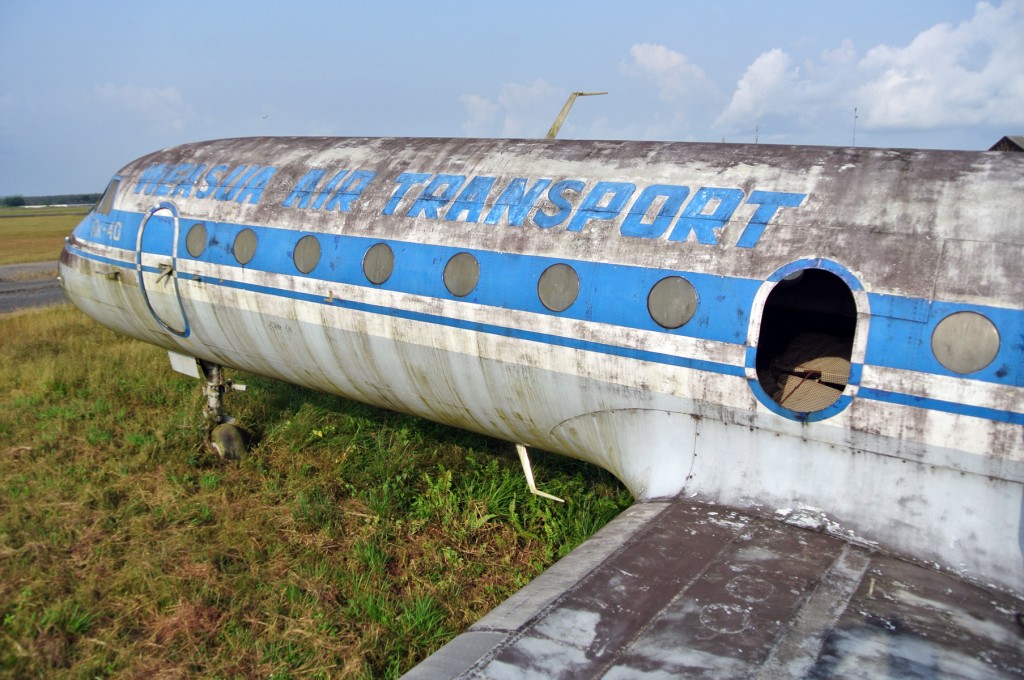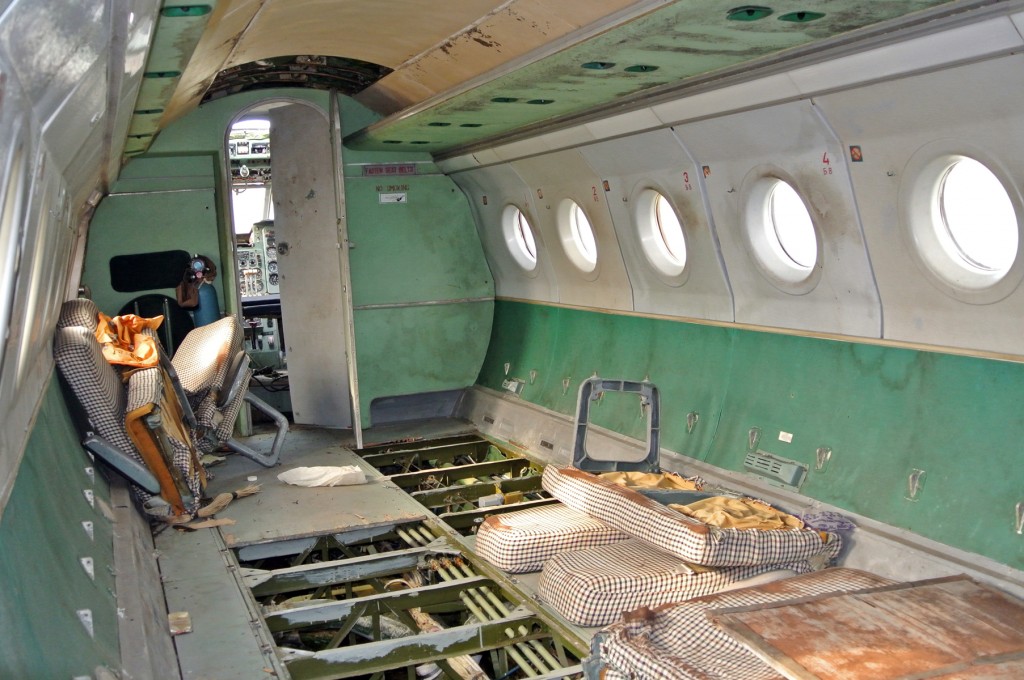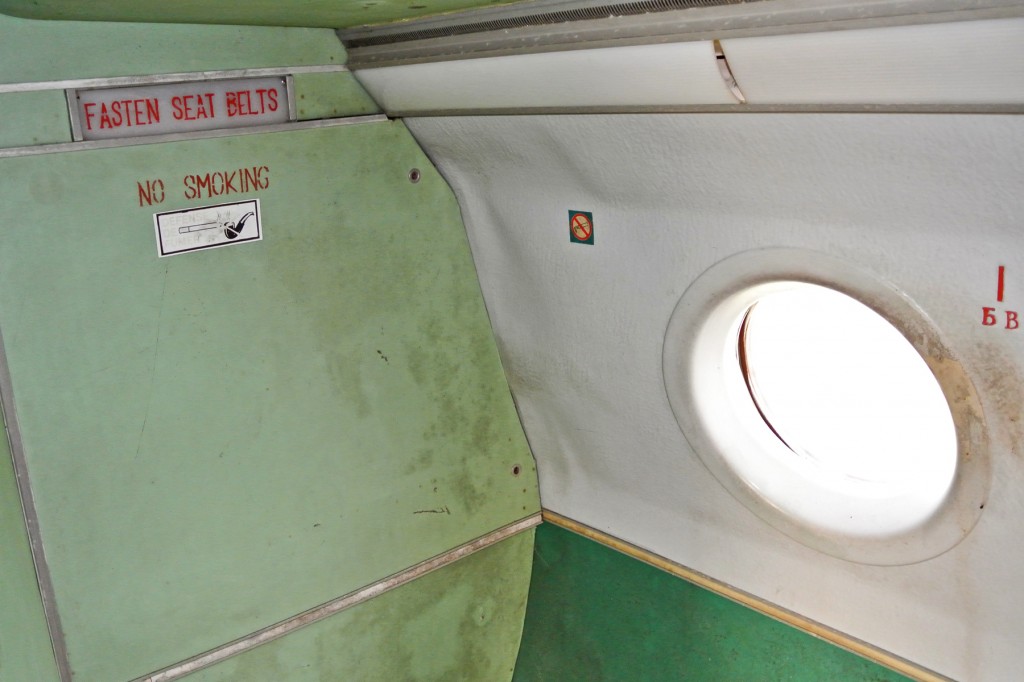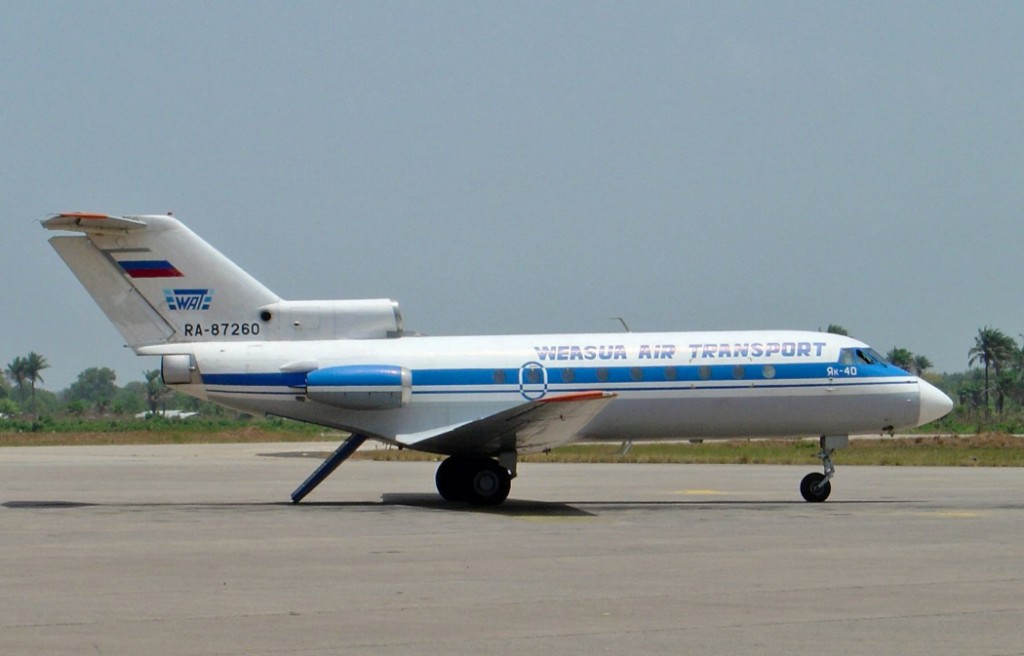Yak Hunting in Liberia
PHOTOS AND STORY BY PATRICK SMITH
POSSIBLY THIS IS ONE OF THOSE THINGS only an aerophile can understand, but there’s something so fascinating, even enchanting, about old abandoned airplanes.
Entire books have been written about them — field guides, you could say — chronicling the whereabouts of this or that crashed, abandoned, or otherwise derelict airliner. You find them crashed in forests, mothballed in the desert, and tucked away in weedy corners of third-world airports: antique propliners like Constellations and DC-6s; sun-bleached 707s and DC-8s; retired Soviet Tupolevs. The jetliner boneyards in California and Arizona receive hundreds of requests annually from airliner geeks eager to explore their inventories.
For some of us, poring over some discarded old plane is even more exciting than exploring a still-flying one.
We see these planes as monuments, perhaps? To the men and women who flew them, to the passengers who rode aboard them — and most extraordinary of all, to the the places these planes have been. The difference between the peculiar grandeur of an old abandoned building, for instance, and that of an old abandoned airplane, is that the building existed only in a fixed location. Airplanes, they’ve been everywhere.
I remember, during my visit to the boneyard at Mojave a few years back, looking up at a retired Boeing 747, soon destined for the scrapper. The very same jumbo jet, I later learned, once made London and Honolulu runs for PeopleExpress. Before that, it wore the name “City of Adelaide” for Qantas. I thought of all the far-flung places this elegant machine must have visited in its nearly three decades of flying, from Newark to New Delhi, Bangkok to Buenos Aires. With the same sort of melancholy one feels when remembering an elderly relative in younger, happier times, I imagined this same 747, years ago, whirling in over Hong Kong harbor, ascending over Cape Town at dusk.
Of course, the real stories don’t belong to the planes themselves, but to the people they carried – from sheiks and dignitaries, to millions upon millions of vacationers and tourists. Looking up at the forlorn hulk of that 747, I realized that with every takeoff the plane made, up 450 people were borne aloft with it. Over a 30 year-career, that’s about five million stories. Its rows of empty chairs were like the rings of an ancient tree.
This past Christmas I had the chance to visit an abandoned Yak-40 at Roberts Field — the airport serving Monrovia, Liberia, in West Africa.
The Yakovlev Yak-40 was a tiny three-engined jet made in the Soviet Union. It carried about 30 people. Almost a thousand Yak-40s were built between 1966 and 1978. This was a true “regional jet” some three decades before the term ever existed. A few are still in service.
I’d noticed the derelict Yak on earlier visits to Roberts, but never had the opportunity to wander over and explore. This time, in the company of an airport worker and his van, I was able to make the trip.
The plane wears a Russian registration and the markings of something called Weasua Air Transport, a tiny Liberian carrier that, according to Google and the database at Airliner.net, was shut down by regulators in 2006. Apparently Weasua never had more than two or three aircraft at a time — one of which crashed — and was once a member the European Union’s safety blacklist. The blue markings borrow from the old Aeroflot livery, and I imagine the jet once flew for Aeroflot, as most Yak-40s did.
Exactly how long it’s been sitting here, and other details of its past, are unknown. It’s doubtful this old jet did much “whirling in over Hong Kong harbor.” Trundling through an ice-fog over Smolensk is more like it. Nonetheless, these mysteries make the plane that much more interesting.
I love the Soviet-style oval doors.
It was best to tread carefully on the walk from the overwing entry door to the cockpit. The cabin floor is mostly torn up, meaning one slip and you’re up to your knees in metal fuselage ribbing, assorted machinery, and greasy water. Up front, the pilots’ overhead escape hatch is missing, permanently exposing the interior to Liberia’s heat and drenching rains. Thus the cabin has become a sort of tropical terrarium, with about eight inches of stagnant green water between the floorboards and the bottom of the fuselage. I can’t imagine how many mosquitos — and who knows what all else — breed in here.
The NO SMOKING sign features a pipe. Note also the Cyrillic seat designator.
The cockpit is a baffling array of early generation engine gauges and instruments. I couldn’t tell you what half of these switches and dials might be for. The placards and labels are in Russian.
In the weeds nearby are hundreds of barrels of heavy black liquid that appears to be tar — much of which has leaked into ankle-deep slicks.
I was able to unearth this shot of the very same plane — note the registration, RA-87260 — in happier times, seen in Sierra Leone in 2004. (Photo courtesy of Ali Hammoud.)
RELATED STORIES:
IMAGES FROM LIBERIA. PHOTOS FROM ROBERTS FIELD AND BEYOND.
LETTER FROM MOJAVE. THE DEEPER MEANINGS OF AN AIRPORT GRAVEYARD.












